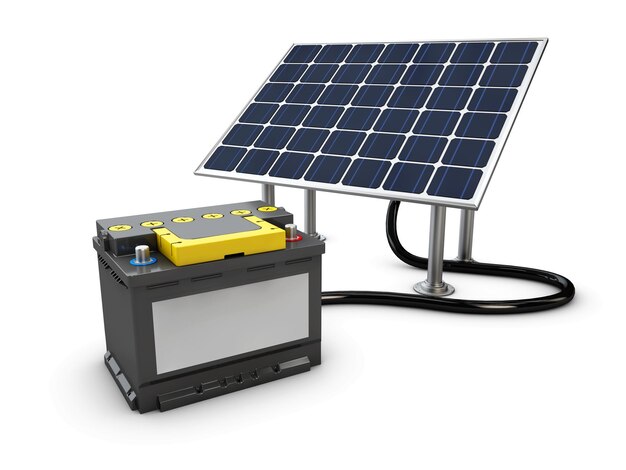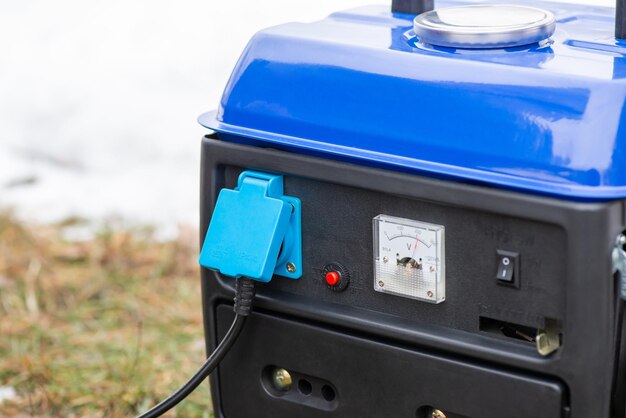Overview of 15 Top Models of Portable Solar Power Systems

Designing a portable solar power system capable of powering multiple appliances and gadgets efficiently is a significant consideration for those seeking off-grid solutions or a backup power source. Here’s an overview of 15 top models of portable solar power systems with an estimation of their costs, showcasing their capabilities to power up multiple devices daily.


Page Contents
- 1 Overview of 15 Top Models of Portable Solar Power Systems
- 1.1 1. Goal Zero Yeti 3000X Portable Power Station
- 1.2 2. Jackery Explorer 2000 Portable Power Station
- 1.3 3. EcoFlow Delta 1300 Power Station
- 1.4 4. Bluetti AC200P Portable Power Station
- 1.5 5. Goal Zero Yeti 1500X Portable Power Station
- 1.6 6. Anker Powerhouse II 400 Portable Power Station
- 1.7 7. Renogy Phoenix 300 Portable Power Station
- 1.8 8. Goal Zero Yeti 500X Portable Power Station
- 1.9 9. Suaoki G500 Portable Power Station
- 1.10 10. Maxoak Bluetti EB150 Portable Power Station
- 1.11 11. Rockpals 300W Portable Power Station
- 1.12 12. Kalisaya KP401 KaliPAK Portable Solar Generator
- 1.13 13. Paxcess 100W Portable Power Station
- 1.14 14. Rockpals 500W Portable Power Station
- 1.15 15. Duracell PowerSource Quiet Portable Power Station
- 2 Here’s an approximate estimation based on the capacities of the mentioned 3 portable solar power stations:
- 3 Conclusion
Overview of 15 Top Models of Portable Solar Power Systems
1. Goal Zero Yeti 3000X Portable Power Station
- Capacity: 3,075 watt-hours (Wh)
- Output: Multiple AC outlets, USB ports, and 12V outputs
- Estimated Cost: Around $3,000 – $3,500
2. Jackery Explorer 2000 Portable Power Station
- Capacity: 2,048 watt-hours (Wh)
- Output: AC outlets, USB-C, USB-A, and 12V outputs
- Estimated Cost: Approximately $1,800 – $2,000
3. EcoFlow Delta 1300 Power Station
- Capacity: 1,260 watt-hours (Wh)
- Output: Multiple AC outlets, USB, and DC outputs
- Estimated Cost: Around $1,200 – $1,300
4. Bluetti AC200P Portable Power Station
- Capacity: 2,000 watt-hours (Wh)
- Output: AC outlets, USB, DC, and wireless charging
- Estimated Cost: Approximately $1,500 – $1,800
5. Goal Zero Yeti 1500X Portable Power Station
- Capacity: 1,516 watt-hours (Wh)
- Output: Multiple AC outlets, USB, and 12V outputs
- Estimated Cost: Around $1,500 – $1,700
6. Anker Powerhouse II 400 Portable Power Station
- Capacity: 388.8 watt-hours (Wh)
- Output: AC outlet, USB, and DC outputs
- Estimated Cost: Approximately $400 – $500
7. Renogy Phoenix 300 Portable Power Station
- Capacity: 337 watt-hours (Wh)
- Output: AC outlet, USB, DC, and CIG outputs
- Estimated Cost: Around $400 – $500
8. Goal Zero Yeti 500X Portable Power Station
- Capacity: 505 watt-hours (Wh)
- Output: Multiple AC outlets, USB, and 12V outputs
- Estimated Cost: Approximately $600 – $700
9. Suaoki G500 Portable Power Station
- Capacity: 500 watt-hours (Wh)
- Output: AC outlets, USB, and DC outputs
- Estimated Cost: Around $400 – $500
10. Maxoak Bluetti EB150 Portable Power Station
- Capacity: 1,500 watt-hours (Wh)
- Output: Multiple AC outlets, USB, and 12V outputs
- Estimated Cost: Approximately $1,200 – $1,400
11. Rockpals 300W Portable Power Station
- Capacity: 280 watt-hours (Wh)
- Output: AC outlet, USB, and DC outputs
- Estimated Cost: Around $200 – $250
12. Kalisaya KP401 KaliPAK Portable Solar Generator
- Capacity: 384 watt-hours (Wh)
- Output: Multiple AC outlets, USB, and 12V outputs
- Estimated Cost: Approximately $400 – $500
13. Paxcess 100W Portable Power Station
- Capacity: 155 watt-hours (Wh)
- Output: AC outlet, USB, and DC outputs
- Estimated Cost: Around $150 – $200
14. Rockpals 500W Portable Power Station
- Capacity: 540 watt-hours (Wh)
- Output: Multiple AC outlets, USB, and 12V outputs
- Estimated Cost: Approximately $400 – $500
15. Duracell PowerSource Quiet Portable Power Station
- Capacity: 660 watt-hours (Wh)
- Output: Multiple AC outlets, USB, and 12V outputs
- Estimated Cost: Around $500 – $600
The number of appliances and gadgets that a portable solar power station can power up per day depends on the wattage requirement of each device and the capacity of the power station.
Here’s an approximate estimation based on the capacities of the mentioned 3 portable solar power stations:
1. Goal Zero Yeti 3000X Portable Power Station:
- Capacity: 3,075 watt-hours (Wh)
To estimate the number of devices it can power up per day:
- Charging smartphones (approx. 15-20 watts): Around 150 charges.
- Laptops (approx. 50-75 watts): Approximately 40-50 hours of usage.
- LED lights (approx. 10-15 watts): Around 200 hours of usage.
- Small appliances like a mini-fridge (approx. 100 watts): Approximately 30 hours of usage.
2. Jackery Explorer 2000 Portable Power Station:
- Capacity: 2,048 watt-hours (Wh)
Estimation for devices:
- Charging smartphones: About 100-130 charges.
- Laptops: Approximately 27-40 hours of usage.
- LED lights: Around 130-200 hours of usage.
- Small appliances like a mini-fridge: Roughly 20-30 hours of usage.
3. EcoFlow Delta 1300 Power Station:
- Capacity: 1,260 watt-hours (Wh)
Estimation for devices:
- Charging smartphones: Roughly 60-80 charges.
- Laptops: Approximately 16-25 hours of usage.
- LED lights: Around 80-120 hours of usage.
- Small appliances like a mini-fridge: About 12-20 hours of usage.
These estimations are approximate and will vary depending on the actual power consumption of each device and how you use the power station. Always check the power requirements (wattage) of your appliances and gadgets to calculate the runtime more accurately. Additionally, factors like temperature, efficiency, and whether you’re using multiple devices simultaneously can affect the total power consumption and runtime of the portable power station.
Conclusion
Each of these portable solar power stations varies in capacity, output options, and pricing, allowing users to charge and power multiple appliances and gadgets ranging from smartphones and laptops to small kitchen appliances or medical devices. Prices may fluctuate based on features, capacity, and additional accessories included with the power stations.
It’s crucial to assess your power needs, the types of devices you intend to charge, and the duration for which you’ll require power when selecting the most suitable portable solar power system for your requirements.







